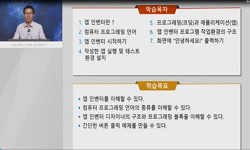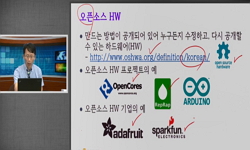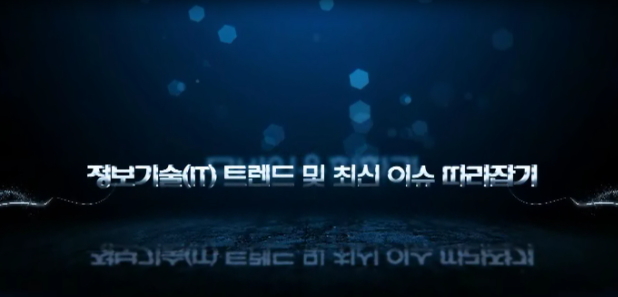Hearing impaired people are apt to be in danger because they can’t detect danger with sound. Hearing impaired people have less risk-detection ability than non-disabled people because of lack of hearing. There are many devices to help the hearing imp...
http://chineseinput.net/에서 pinyin(병음)방식으로 중국어를 변환할 수 있습니다.
변환된 중국어를 복사하여 사용하시면 됩니다.
- 中文 을 입력하시려면 zhongwen을 입력하시고 space를누르시면됩니다.
- 北京 을 입력하시려면 beijing을 입력하시고 space를 누르시면 됩니다.
https://www.riss.kr/link?id=A106493291
- 저자
- 발행기관
- 학술지명
- 권호사항
-
발행연도
2019
-
작성언어
English
- 주제어
-
등재정보
KCI등재
-
자료형태
학술저널
-
수록면
214-220(7쪽)
-
KCI 피인용횟수
0
- DOI식별코드
- 제공처
-
0
상세조회 -
0
다운로드
부가정보
다국어 초록 (Multilingual Abstract)
Hearing impaired people are apt to be in danger because they can’t detect danger with sound. Hearing impaired people have less risk-detection ability than non-disabled people because of lack of hearing. There are many devices to help the hearing impaired, such as hearing aids. A hearing aids can be helpful, but it may not be available depending on the degree or type of hearing loss for example, to the hearing-impaired people with little remaining hearing of high frequencies, ordinary hearing aids are not very useful for understanding the high frequency consonants and it requires a high cost, from thousands to tens of thousands of dollars. Also, it is difficult for the underprivileged, such as the low-income bracket and the elderly, to use them because they are difficult to manage. Therefore, this paper describes the development of low-cost wearable device to assistant a hearing-impaired people using Arduino. Also, it accepts values from switches or sensors and can control external electronic devices such as LEDs and motors to create objects that can interact with the environment. In this is paper, through sound sensors, the ambient sound was taken as an analogue value and transmitted to the aduino board, and the vibration motor was operated when the noise was generated, so that the user could be aware of the occurrence of danger.
참고문헌 (Reference)
1 Abby McCormack, "Why do people fitted with hearing aids not wear them?" Informa UK Limited 52 (52): 360-368, 2013
2 서동성, "The Developement of Real-time Information Support Cart System based on IoT" 한국인터넷방송통신학회 6 (6): 44-49, 2017
3 Ministry of Health and welfare, "Survey of disabled people"
4 K.W. Lee, "Structure and Principle of Hearing Aid"
5 Y. S Lee, "Smart system using Arduino for blind" 2015
6 Hyung-Ah Moon, "Problem Cases in Managing Cochlear Implantees" Korean Academy of Audiology 3 (3): 167-169, 2007
7 S. Kochkin, "Marke Trak V : Why my hearing aids are in the drawer" 53 : 34-41, 2000
8 M. K. Han, "Comparison of the usefulness with Frequency Transposition Hearing System and Conventional Hearing Aids for the Deaf" 3 : 50-56, 1998
9 Hyoung-Ah Moon, "Case Review of Internal Device Failure in Cochlear Implant System" Korean Academy of Audiology 3 (3): 88-90, 2007
1 Abby McCormack, "Why do people fitted with hearing aids not wear them?" Informa UK Limited 52 (52): 360-368, 2013
2 서동성, "The Developement of Real-time Information Support Cart System based on IoT" 한국인터넷방송통신학회 6 (6): 44-49, 2017
3 Ministry of Health and welfare, "Survey of disabled people"
4 K.W. Lee, "Structure and Principle of Hearing Aid"
5 Y. S Lee, "Smart system using Arduino for blind" 2015
6 Hyung-Ah Moon, "Problem Cases in Managing Cochlear Implantees" Korean Academy of Audiology 3 (3): 167-169, 2007
7 S. Kochkin, "Marke Trak V : Why my hearing aids are in the drawer" 53 : 34-41, 2000
8 M. K. Han, "Comparison of the usefulness with Frequency Transposition Hearing System and Conventional Hearing Aids for the Deaf" 3 : 50-56, 1998
9 Hyoung-Ah Moon, "Case Review of Internal Device Failure in Cochlear Implant System" Korean Academy of Audiology 3 (3): 88-90, 2007
동일학술지(권/호) 다른 논문
-
Robot-based Coding Education System with Step by Step Software Training
- 한국인터넷방송통신학회
- 이준
- 2019
- KCI등재
-
Forgery Detection Mechanism with Abnormal Structure Analysis on Office Open XML based MS-Word File
- 한국인터넷방송통신학회
- 이한성
- 2019
- KCI등재
-
- 한국인터넷방송통신학회
- 김정미
- 2019
- KCI등재
-
A Study on Emotional Information System Using User Color Information
- 한국인터넷방송통신학회
- 고혜경
- 2019
- KCI등재
분석정보
인용정보 인용지수 설명보기
학술지 이력
| 연월일 | 이력구분 | 이력상세 | 등재구분 |
|---|---|---|---|
| 2027 | 평가예정 | 재인증평가 신청대상 (재인증) | |
| 2021-01-01 | 평가 | 등재학술지 유지 (재인증) |  |
| 2018-01-01 | 평가 | 등재학술지 선정 (계속평가) |  |
| 2017-01-01 | 평가 | 등재후보학술지 유지 (계속평가) |  |
| 2015-01-01 | 평가 | 등재후보학술지 선정 (신규평가) |  |
| 2013-12-26 | 학회명변경 | 영문명 : The Institute of Webcasting, Internet and Telecommunication -> The Institute of Internet, Broadcasting and Communication | |
| 2010-06-21 | 학회명변경 | 한글명 : 한국인터넷방송통신TV학회 -> 한국인터넷방송통신학회영문명 : Institute Of Webcasting, Internet Television And Telecommunication -> The Institute of Webcasting, Internet and Telecommunication | |
| 2005-08-25 | 학회명변경 | 한글명 : 한국인터넷방송/TV학회 -> 한국인터넷방송통신TV학회영문명 : Institute Of Webcasting, Internet Television And Telecommunication -> Institute Of Webcasting, Internet Television And Telecommunication |
학술지 인용정보
| 기준연도 | WOS-KCI 통합IF(2년) | KCIF(2년) | KCIF(3년) |
|---|---|---|---|
| 2016 | 0 | 0 | 0 |
| KCIF(4년) | KCIF(5년) | 중심성지수(3년) | 즉시성지수 |
| 0 | 0 | 0 | 0.02 |




 KCI
KCI






